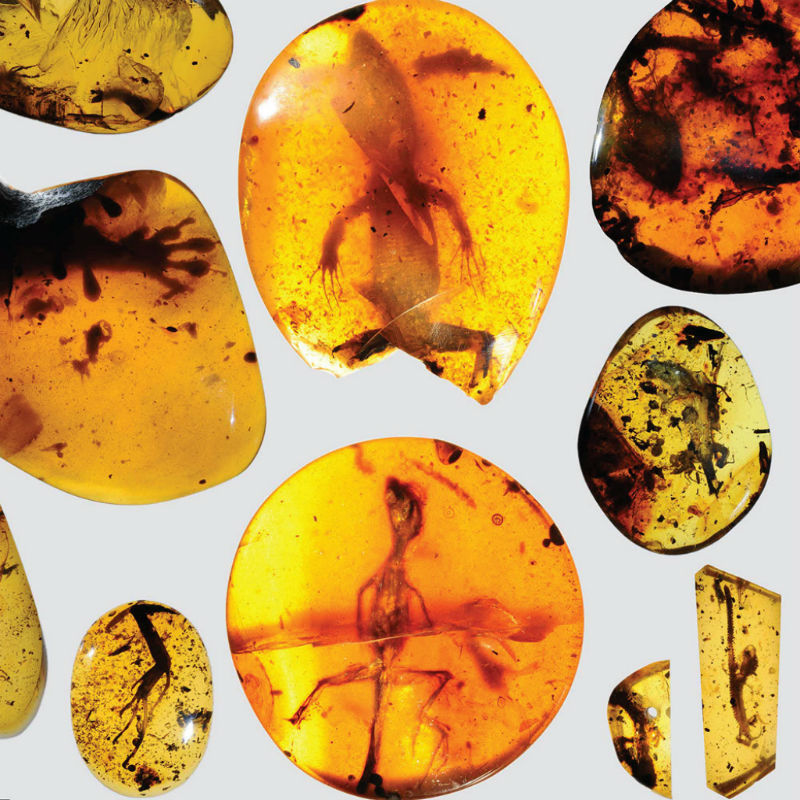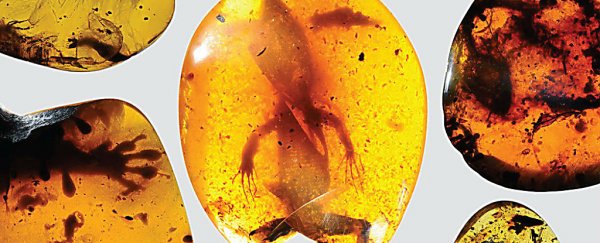Researchers have just announced the discovery of one of the world's oldest known chameleon specimen, which has been preserved in amber for almost 100 million years. The new find could help us better understand how chameleons evolved to be one of the strangest lizards in the modern world.
The fossil's story starts roughly 99 million years ago when an unfortunate chameleon was scurrying through the branches of an ancient tree in modern day Myanmar. During its climb, the small lizard accidentally got itself stuck in resin, which forms on the outer layers of trees and commonly drips onto unsuspecting insects and other creatures.
This resin eventually hardened and fossilised into amber - the same stuff that let scientists in Jurassic Park bring back the dinosaurs. Then, it remained hidden from view until a few decades ago when researchers from the University of Florida dug it out, and now they've finally had the chance to analyse the specimen.
Though the new chameleon hasn't been formally named yet, it represents the oldest known chameleon specimen ever found. In fact, the new specimen is a whopping 78 million years older than the previous record holder, which is just a ridiculously huge gap when you think about it.
Besides shattering the previous record, the specimen, which is one of 13 lizard fossils analysed by the team, could make a huge difference to researchers who are trying to understand how reptiles evolved.
 David Grimaldi
David Grimaldi
"These fossils tell us a lot about the extraordinary, but previously unknown diversity of lizards in ancient tropical forests," said one of the team, Edward Stanley. "The fossil record is sparse because the delicate skin and fragile bones of small lizards do not usually preserve, especially in the tropics, which makes the new amber fossils an incredibly rare and unique window into a critical period of diversification."
To ascertain all of this information from the fossils, the team used micro-CT scanners, which allowed them to piece together the specimen inside the amber without needing to physically break it apart.
So far, the find has challenged the previously held notion that chameleons first evolved in Africa. With further study, the team hopes to get a more complete look at how chameleons - one of the world's strangest lizards - evolved to have the traits we all associate them with. For example, the specimen has the same tongue as modern chameleons without the unique toes and body shape that they're known for.
The team's findings were published in Science Advances.
